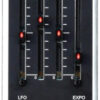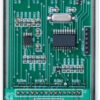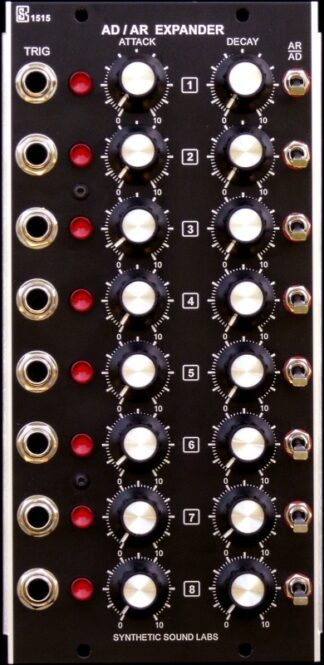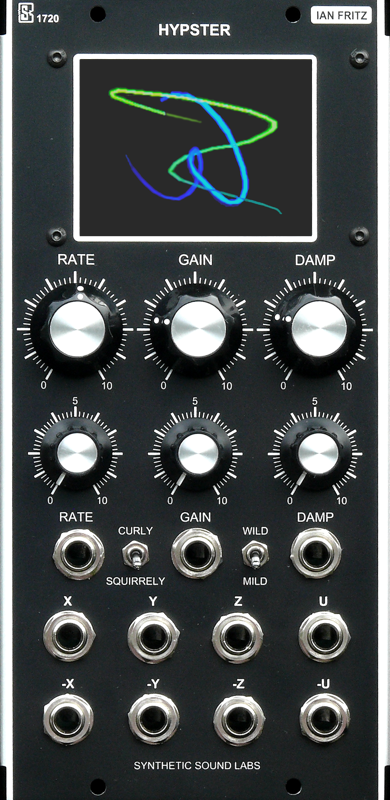Description
The SSL 1235 is an incredibly useful combination of an ADSR Envelope Generator (ADSR) and a Voltage Controlled Amplifier (VCA).
Arguably one of the most convenient and space efficient pairings of functions, this new single width module would traditionally require at least two separate 1 MU modules. The compact design with lower cabinet space has many price / space / performance advantages over other available modules.
The ADSR is a completely modern, microprocessor based design, and the VCA has a high quality signal path and linear control response. The ADSR and VCA have been ‘normalized’ for convenience, but may be used completely separately.
VCA
The VCA has a high quality, DC Coupled signal path and linear control response with controls for initial level and external control voltage amount.
ADSR
The ADSR is a completely modern, microprocessor based design, capable of functions virually impossible to create in the strictly analog realm.
A Mode switch selects between Normal (single gate input per cycle), LFO (continuous cycling), and Gated LFO (cycles while Gate is applied).
Also included is a switch to select between the ‘traditional’ Logarithmic envelope shape, a Linear envelope typical of early-era digital synths, and an Exponential envelope that’s handy for using linear VCAs is if they had an expo mode. Very snappy.
A manual Gate button is provided which contains an LED indicating the relative output levels.
Each of the ADSR slide potentiometers contains an LED, and these conveniently brighten to indicate the envelope cycle stages. (It’s pretty too!)
- Fast Times – The Minimoog, Sequential Pro-One and SH101 all have famously quick attack times of around 1 mSec. These snappy times are duplicated by the 1235.
- Long Times – Most analog synths can do a slow attacks or decays/releases of a handful of seconds, but the 1235’s 10 second times gives a nice range of 1 mSec to 10 Secs (1:10,000), and allows very slowly evolving sounds to be generated.
- The 1235 achieves accuracy and precision due to its internal microprocessor based architecture. It provides 8-bit internal envelope mapping and calculations, but the final LEVEL_CV multiplication provides effective 16-bit calculations, of which 10 bits are ultimately output.










Reviews
There are no reviews yet